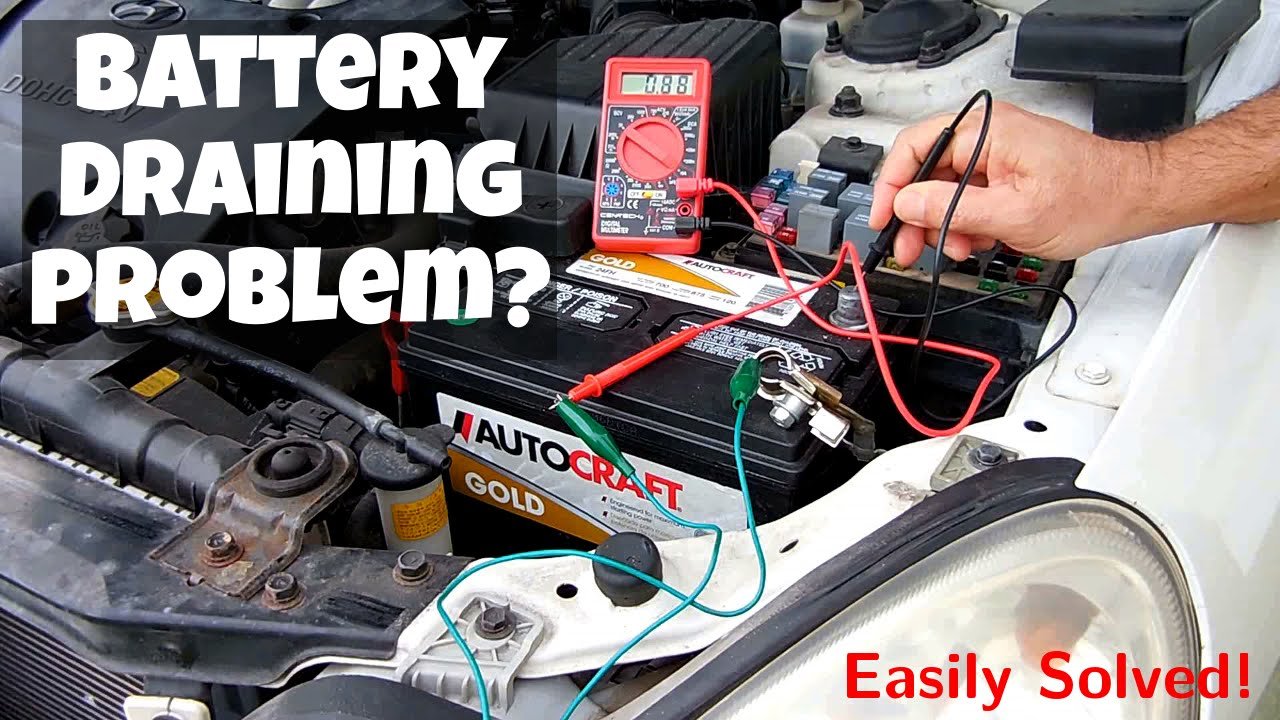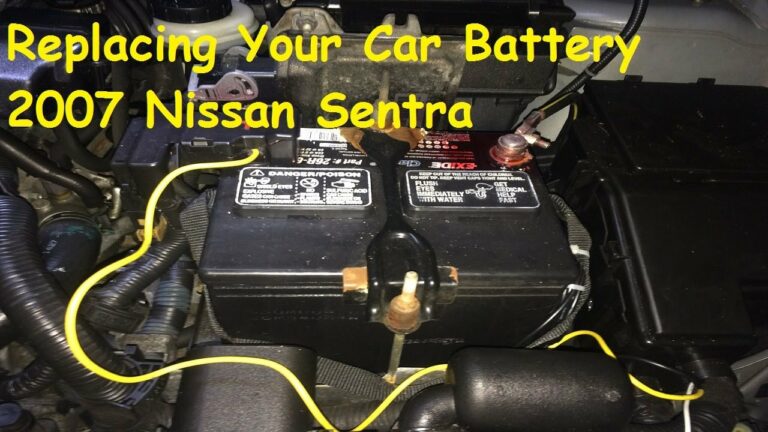How To Fix Car Battery Drain: Troubleshooting Guide
Having trouble with a drained car battery? Don’t worry, we’ve got you covered. In this article, we will walk you through the simple yet effective steps to troubleshoot and fix a car battery drain. Whether you’re a seasoned car enthusiast or a beginner, this guide will help you diagnose the problem and get your vehicle up and running in no time. So, let’s dive in and learn how to troubleshoot a car battery drain, shall we?
How To Fix Car Battery Drain
Car battery drain can be a frustrating issue for car owners. It can leave you stranded and unable to start your vehicle, causing delays and inconvenience. However, diagnosing and troubleshooting the underlying cause of a battery drain can help you resolve the issue and prevent it from happening again in the future. In this article, we will discuss various methods and steps to troubleshoot a car battery drain effectively.
1. Check for Obvious Causes
– Start by checking for any obvious causes of battery drain, such as leaving lights or accessories on. Ensure that all lights, including interior, exterior, and trunk lights, are turned off. Check if any accessories, such as phone chargers or entertainment systems, are plugged in and draining power even when the car is off.
2. Inspect the Battery
– Examine the battery for any visible signs of damage, corrosion, or loose connections. Clean any corrosion from the battery terminals using a wire brush and a mixture of baking soda and water. Ensure that the battery terminals are tightly connected and secure. If the battery appears damaged or worn out, consider replacing it.
3. Test the Battery Voltage
– Use a multimeter to test the voltage of the battery. A fully charged battery should read around 12.6 volts. Anything below 12 volts indicates a weak battery that may need to be replaced. If the battery voltage drops significantly after a short period, it could indicate a drain issue.
4. Perform a Parasitic Draw Test
– A parasitic draw occurs when a component or system in the vehicle continues to draw power even when the car is turned off. To perform a parasitic draw test, you will need a multimeter capable of measuring amperage. Follow these steps:
a. Turn off the ignition and ensure all doors are closed.
b. Disconnect the negative battery cable and connect the multimeter in series between the battery terminal and the disconnected cable.
c. Wait for approximately 20 minutes to allow any electronic modules to power down.
d. Observe the reading on the multimeter; it should ideally be less than 50 milliamperes (mA). Anything higher indicates a possible drain issue.
e. Start removing fuses or relays one by one, observing any change in the multimeter reading. If the reading drops significantly after removing a specific fuse or relay, you have identified the circuit responsible for the drain.
5. Identify the Culprit Circuit
– Once you have identified the circuit causing the drain, you need to further pinpoint the exact component or system within that circuit. This can be done by referring to the vehicle’s wiring diagram and using a process of elimination. Remove connectors, switches, or components within the circuit one by one, checking the multimeter reading each time, until the drain is eliminated.
6. Check the Alternator
– A faulty alternator can also cause battery drain. While the engine is running, use the multimeter to measure the voltage at the battery terminals. The reading should be around 13.8 to 14.4 volts. Anything lower could indicate a problem with the alternator, such as a faulty voltage regulator.
7. Inspect the Charging System
– Apart from the alternator, other components of the charging system, such as belts and wiring, can also affect the battery’s charging ability. Inspect the belts for any signs of wear or looseness and ensure they are properly tensioned. Check the wiring connections between the alternator, battery, and starter for any loose or damaged connections.
8. Consider Environmental Factors
– Extreme weather conditions can impact a car battery’s performance. In cold weather, batteries tend to work harder to start the engine, while excessive heat can lead to the evaporation of battery fluid. If you live in an area with extreme temperatures, consider investing in a battery insulation blanket or using a trickle charger during extreme weather conditions to maintain the battery’s health.
9. Consult a Professional
– If you have followed the troubleshooting steps and are still unable to identify the cause of the battery drain, it may be time to consult a professional mechanic or an auto electrician. They have the expertise, experience, and specialized equipment to diagnose and repair complex electrical issues accurately.
10. Preventative Measures
– Once you have resolved the battery drain issue, there are several preventative measures you can take to avoid future problems:
– Regularly inspect and maintain the battery, ensuring it is clean and the connections are secure.
– Turn off all lights and accessories when leaving the car.
– If the vehicle will be unused for an extended period, consider using a battery tender or disconnecting the battery to prevent any drain.
– Avoid using aftermarket accessories or modifications that may contribute to battery drain.
Car Battery Drains Overnight Or After Days Of No Use! PARASITIC DRAIN
Frequently Asked Questions
How do I know if my car battery is being drained?
If your car battery is being drained, you may notice signs such as the engine struggling to start, dimming headlights, or a dead battery after a short period of not driving the car. These are indicators that there might be a drain on your battery.
What are the common causes of a car battery drain?
There are several common causes of a car battery drain, including a faulty alternator, a parasitic draw, leaving lights or other electrical components on, a malfunctioning alarm system, or a short circuit in the electrical system. These issues can often lead to a drain on your car battery.
How can I check for a parasitic draw on my car battery?
To check for a parasitic draw on your car battery, you can use a multimeter in the amp setting. Disconnect the negative battery cable and connect the multimeter in series between the negative battery terminal and the negative battery cable. If the reading is higher than 0.05 amps, there might be a parasitic draw causing the battery drain.
Can a bad alternator cause a car battery drain?
Yes, a bad alternator can cause a car battery drain. The alternator is responsible for charging the battery while the engine is running. If the alternator is faulty or not functioning properly, it may not be able to recharge the battery, resulting in a drain.
How do I troubleshoot a car battery drain caused by a short circuit?
To troubleshoot a car battery drain caused by a short circuit, you can start by checking the fuses and wiring for any signs of damage or overheating. Additionally, you can use a multimeter and perform a continuity test on different circuits to identify the one causing the short circuit.
What should I do if I suspect a car battery drain?
If you suspect a car battery drain, it is recommended to take your vehicle to a trusted mechanic who can perform a professional diagnosis. They have the necessary tools and expertise to identify the cause of the drain and provide an appropriate solution.
How can regular maintenance help prevent car battery drains?
Regular maintenance, such as checking the alternator, battery connections, and electrical components, can help prevent car battery drains. Additionally, ensuring that lights and other electrical components are turned off when not in use can also minimize the risk of draining the battery.
Final Thoughts
In conclusion, troubleshooting a car battery drain can be a straightforward process by following a few steps. Firstly, begin by checking for obvious culprits such as lights or accessories left on overnight. Next, assess the battery’s overall condition, ensuring that it is properly charged and free of any corrosion. Then, proceed to inspect the alternator and electrical system for any potential faults. If the issue persists, consulting a professional mechanic may be necessary to conduct a thorough diagnosis. By understanding the various possible causes and applying systematic troubleshooting methods, one can effectively address the question of how to troubleshoot a car battery drain.


